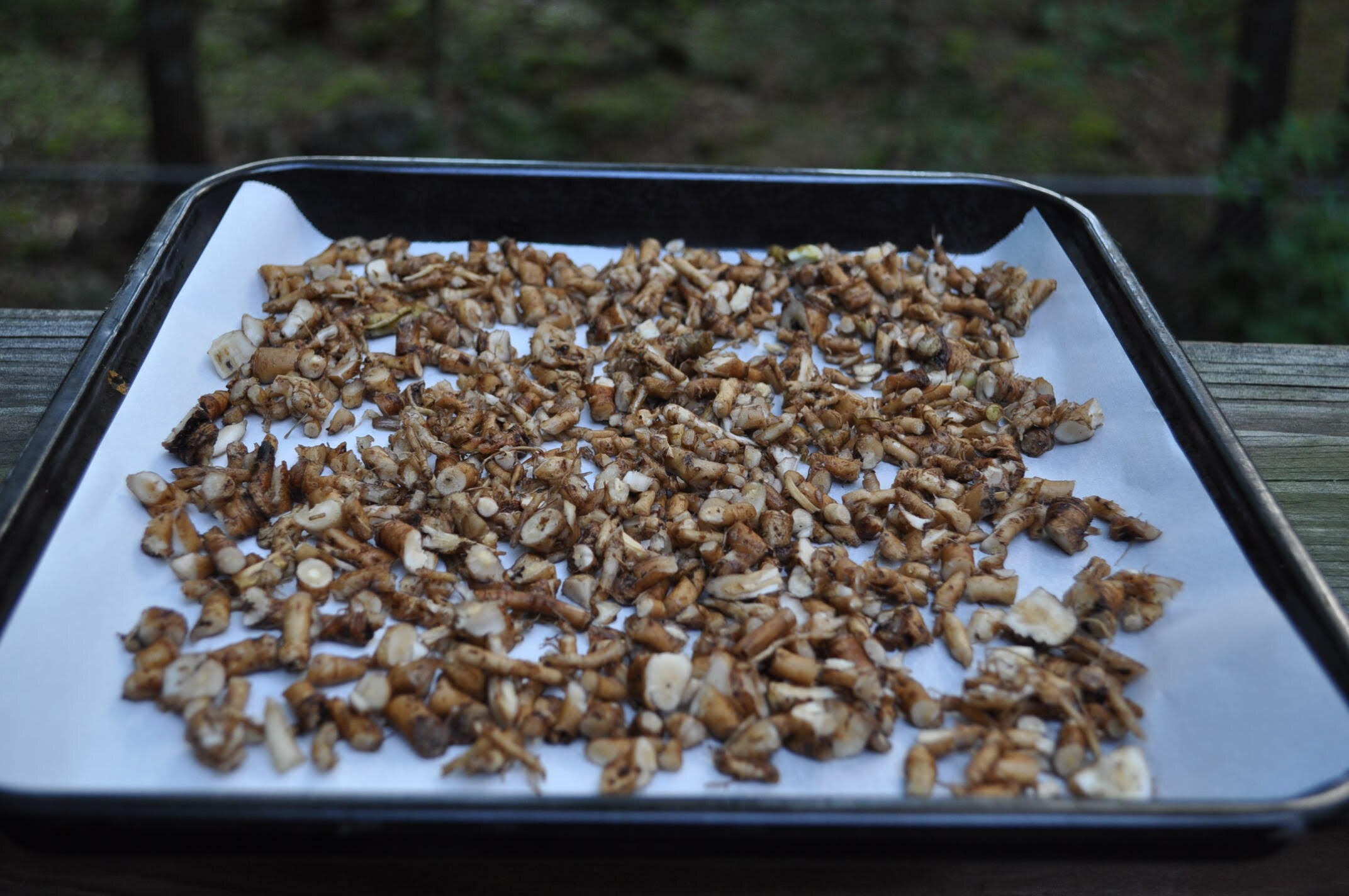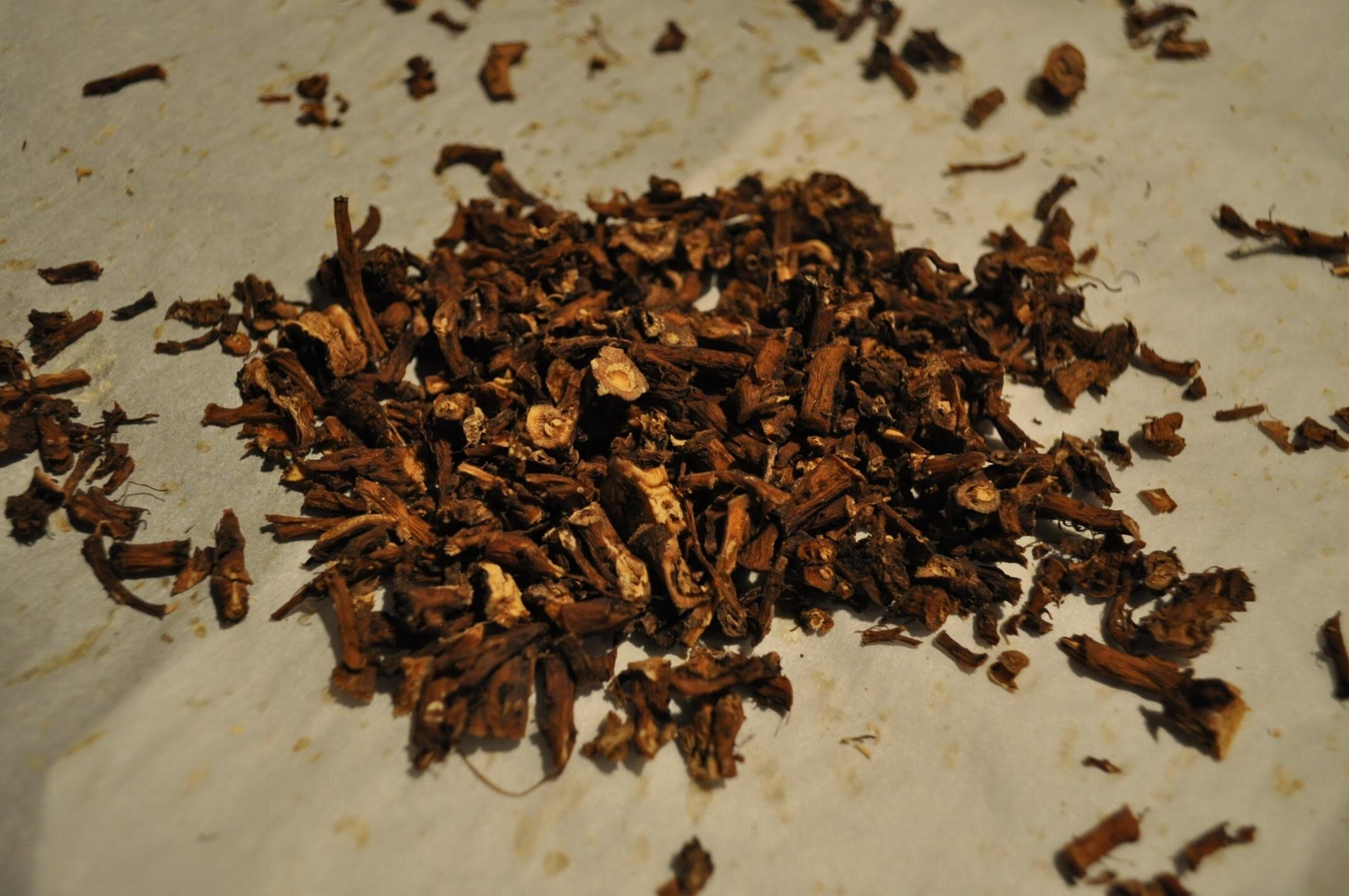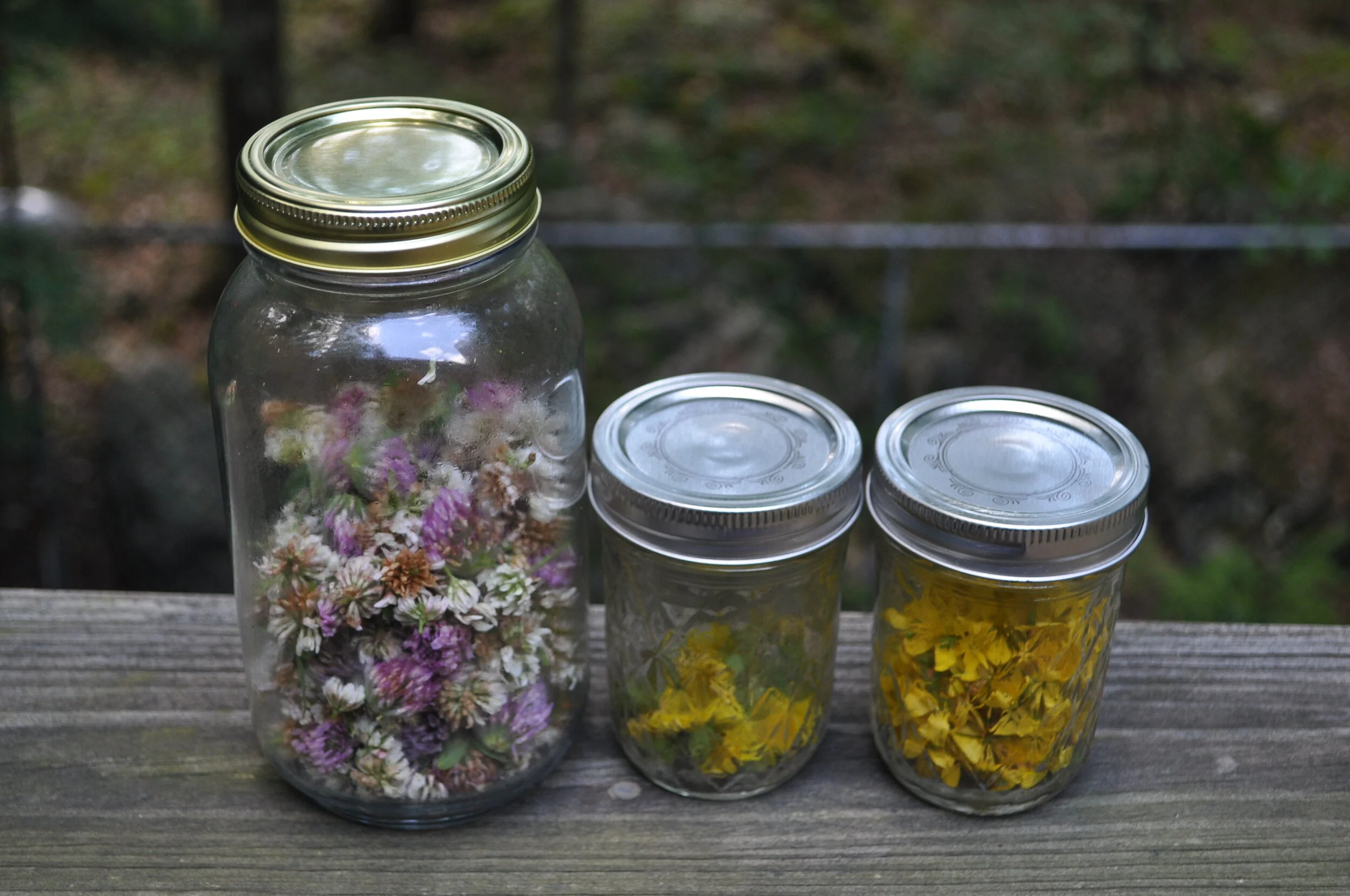Dandelion may have a bad reputation, but it is not just a pesky garden weed. From chai tea to salad to herbal medicine, dandelion is one of the most versatile plants you can forage.
Let’s not overlook dandelion just because it’s common! Dandelion is easy to find, completely edible, and very nutritious. It is a great addition to your sustainable kitchen, and absolutely free.
This post will give a quick overview of the many potential diet and health benefits of adding dandelion to your cooking, followed by a look at the many possible uses of this versatile plant in the kitchen.
I will share some of my favorite uses with you, including dandelion smoothies, pesto, roasted roots, and a coffee alternative!
A Bit About Dandelion
Dandelions are native to Eurasia but were introduced to the Americas as an edible crop. They are now found across the globe and are considered a detrimental weed in many areas.
The common name dandelion is likely derived from the French “dent-de-lion,” meaning lion’s tooth. The jagged edges of dandelion leaves resemble sharp teeth.
Dandelions are incredible colonizers and proliferators. Just one plant can release over 5,000 seeds in a year. These light seeds can travel far from their parent plant by wind, and easily colonize a variety of climates and soil types.
While prodigious growth and reproduction make dandelion a frustrating weed on farms and gardens, dandelion is also great plants to forage as they are very easy to find.
Many wildflowers look quite similar to dandelion, so take care when foraging. Hawkweed, catsear, and coltsfoot can easily be mistaken for dandelion. True dandelion species can be distinguished from these lookalikes by their hollow, smooth, and unbranched stems.
Nutrition
Dandelion is an excellent source of essential nutrients to add to your diet. Raw or cooked dandelion contains vitamins A, C, and K. Dandelion is also a minor source of vitamin E and B vitamins.
Each part of the dandelion plant also has specific nutritional properties. Dandelion greens contain important minerals, including iron, calcium, potassium, and magnesium.
The flowers are rich in antioxidants, including beta-carotene and polyphenols. These compounds protect cells from oxidative damage.
Dandelion root is a great source of soluble fiber, stored in the molecule inulin. Inulin supports digestive function and a healthy gut microbiome.
Health Benefits
Dandelion has been used in a variety of herbal medicines for centuries. It has many supposed health benefits, many of which are backed by chemical and laboratory studies.
Below are a handful of the potential health benefits of dandelion.
Dandelion extract decreases inflammation
Leaf and petal extracts demonstrate antioxidant properties which imply dandelion may support healthy liver function
Chicoric and chlorogenic acid, which are found in all parts of the plant, may help regulate blood sugar levels
Dandelion may even have some effect in inducing death of cancer cells
Dandelion lowers cholesterol, which could support heart health
Dandelion is a natural diuretic. Its French common name, pissenlit, means “wet the bed”. The diuretic properties of dandelion make it useful in treating urinary tract infections.
Keep Reading!
The rest of this article will explore some of the ways to use dandelion in your kitchen, to gain some of these nutritional and health benefits sustainably and for free.
Love Tea? Check out our article Foraging For Wild Tea
Dandelion In The Kitchen
Dandelion Leaves
Dandelion leaves provide a nutritious, bitter green vegetable. In addition to seeing these leaves growing on your lawn, you may be able to spot them at your local farmer’s market. Dandelion seeds are also available to grow your own for a constant supply.
Dandelion greens can be unbearably bitter. Bitterness can be avoided by foraging in shady, rich soils, and looking for bright rather than dark green leaves.
Younger leaves also tend to be less bitter. Blanching the leaves before cooking them also helps remove some of the bitterness of the greens.
Smoothies
Adding dandelions to smoothies as you would spinach or any other green is a great way to get its nutritive benefits while avoiding its bitterness. Blending with sweet fruit, such as banana or mango, combats the bitterness of the greens.
Baked Dandelion Chips
Baked dandelion leaves make a healthy and quick snack, similar to kale chips. Young leaves work best for this, as older leaves still have quite a bitter taste after baking.
To make dandelion chips, toss the leaves in a little oil, salt, and seasoning of your choice. Dry the leaves on low heat, around 215°F for approximately 10 minutes. Cooking time varies depending on the size of your leaves, so check on them from the 5-minute mark and take them out once they are dry and crispy.
Dandelion Chips - a nutricious fun snack! Photo credit: Kaia Waxenberg
Sauteed
Sauteed dandelion greens are a flavorful side dish. Soaking the greens for 10 minutes, blanching them in boiling water for 3 minutes before frying them helps remove some of their bitter flavor.
Frying the wilted greens with onion, garlic, and spices is a great way to enjoy them. Particularly bitter greens can be paired with a sweet sauce or mixed with other veggies to make them more palatable.
Sauteed greens can also be used to add a bit of green to scrambled eggs, omelets, and frittatas.
Dandelion Salad
Young, milder leaves can be used to make fresh dandelion salad. Salad leaves are best picked in early spring before the plant blooms. Raw dandelion greens pair nicely with sweet dressings or fruit, such as strawberries or dried cranberries.
Raw dandelion greens can also be used to make a dandelion pesto without basil. Blending the dandelion greens with olive oil, nuts of your choice, lemon juice, parmesan, and garlic. You can really use any pesto recipe, replacing basil with fresh, young dandelion greens.
Fresh foraged dandelion leaves . Photo credit: Kaia Waxenberg
Dandelion Root
Dandelions have a starchy taproot which is also edible. Foraging for dandelion roots takes a bit more time and attention than foraging for the greens or flowers. In general, larger rosettes of leaves will have larger, less bitter taproots.
To forage for dandelion roots, use a trowel or spade to loosen the soil around each taproot, as the roots will snap if you just try to pull them out. Digging out the roots is easier just after rain loosens the ground.
To process the roots, rinse them thoroughly, then scrub off any remaining dirt by hand. Pull off any smaller fibrous roots from the main taproot. This can take a while, so get some good tunes or your favorite show going.
Scrub the dirt off and you’re all set to cook the roots! Photo credit: Kaia Waxenberg
The largest and least bitter dandelion roots can be cooked like turnips or carrots. Use a paring knife or vegetable peeler to remove the outer skin of the taproots. Then, boil the roots in a shallow layer of water until tender. Frying the roots in butter, honey, and herbs is a great way to enjoy them.
Dandelion Coffee
The roots can also be roasted to make dandelion root tea, which is sometimes considered a decaffeinated coffee replacement.
To roast dandelion roots for tea, chop the roots finely and roast at 250°F until they are completely dry and brown, but not burnt. This will take 3-4 hours, depending on the size of your roots.
For dandelion coffee, grind the roots in a coffee grinder or blender and steep in boiling water for 5 minutes. Use 1 tablespoon of ground roots for 1 cup of coffee. This can be quite bitter, especially for smaller roots. Adding cream and sweetener is almost a must.
Before and after pictures of roasted roots. Cooked and photographed by the author.
Dandelion Chai
You can also combine the roasted dandelion root with chai spices including cinnamon, nutmeg, peppercorns, allspice, ginger, and cloves. To make dandelion root chai, boil spices of your choice and dandelion root for 10-15 minutes and strain. Add milk and sweetener to taste.
DANDELION FLOWERS
Dandelion flowers are edible, very pretty, and have a number of culinary uses.
To use dandelion flowers in any of the following recipes, be sure to remove the bitter green part at the base of the flower. Also, be sure to take care in identifying dandelion blossoms, and be aware of their many lookalikes!
In very early spring, young dandelion buds can be picked and pickled to make “capers.” Once they bloom, dandelion flowers can be baked into goodies like cookies and cupcakes, or battered and fried to make dandelion fritters.
Dandelion flowers are also used in a number of drinks. Dandelion flowers can be fermented at home with water, sugar, and lemon to make homemade dandelion wine. In the UK, dandelion features in a traditional soft drink flavored with dandelion and burdock.
Dandelion flowers can also be steeped in water to make a simple dandelion tea.
Dandelion syrup is popular in Poland, where it is called miodek majowy, or may honey. May honey is a great, inexpensive vegan alternative to honey. It is made by soaking dandelion blossoms in water overnight. The strained dandelion tea is then reduced with lemon and sugar until it thickens.
Dandelion Jelly
Take Away
Dandelions are so often discarded as a garden weed. With their many uses and benefits, there’s no reason to waste them!
As always, be sure to take the proper care in identifying dandelions when foraging. Avoid areas that are very close to roads or sprayed with herbicide or pesticide. Enjoy the last few weeks of summer greenery, and happy foraging!
Dandelions are great to support pollinating insects. Read our blog The Loss of Insects and How It Affects Your Garden.
Guest Author Kaia Waxenberg is a native New Yorker and aspiring conservationist. Having just graduated from college, she will be starting graduate work at the University of Edinburgh. Quarantine has given Kaia some unexpected time back home in the US, which she has spent hiking, studying, and gardening.












Raising honeybees can be challenging and intimidating but very rewarding. I speak from experience when I tell you honey bees will make your gardening endeavors complete.